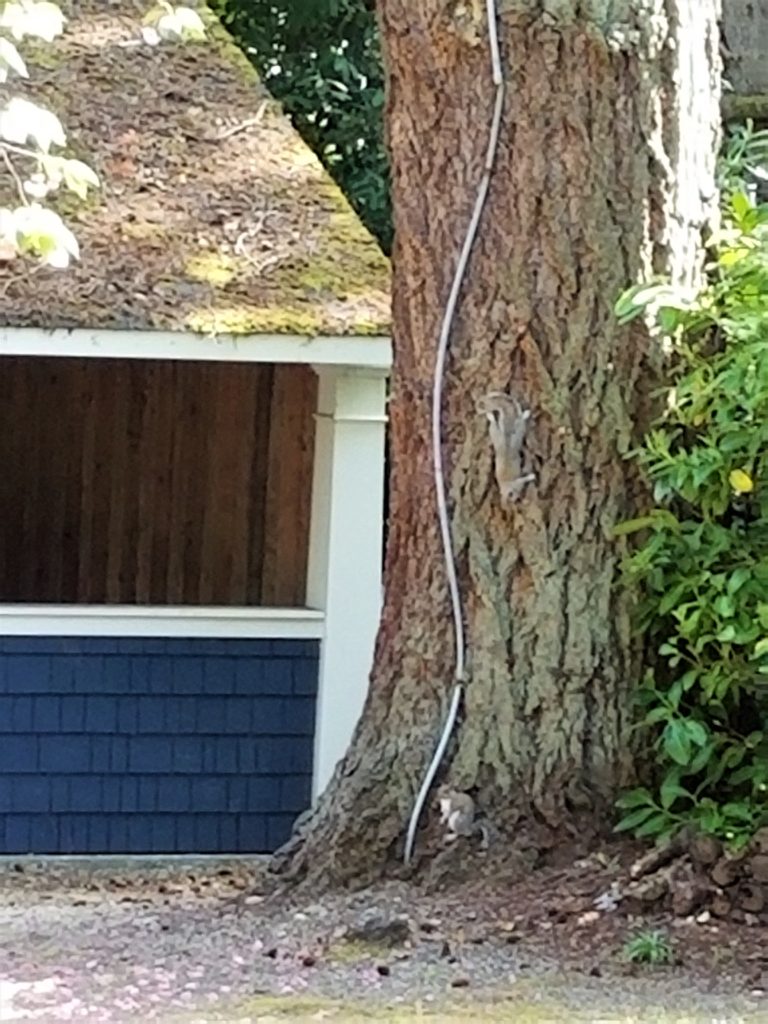One spring many many years ago, our family was surprised and delighted to witness baby gray squirrels being led down from their nest for what must have been the first time. The fuzzy babies were so tiny they could have curled inside a teacup. We gathered at windows on the second floor of our house with a mixture of awe and apprehension as the squirrel parents cautiously ventured onto the lawn with their completely defenseless charges.
Unlike grown squirrels that can quickly dart, leap, and weave while traversing their treeways, these babies hadn’t yet gained their “tree legs,” much less their earthbound legs. With their four limbs spread out as far as possible, they inched their way down the tall fir tree. Their parents literally must have pointed them straight down because they were not even coordinated enough yet to change direction on the tree.
While the babies were vulnerable on the towering fir, they were absolutely helpless and perplexed on the grass. Their hindquarters stuck up in the air like they were practicing a downward dog yoga pose, making walking all but impossible. They would tentatively take a couple of steps, trying to coordinate their front and back legs, then teeter, fall over, and roll around mewling like the bundled-up Randy from A Christmas Story until a parent came over and nudged them upright with their nose. They were adorable, endearing, and mesmerizing. For over an hour, the babies bumbled around under the watchful eyes of their parents before being herded back to the fir for the long, slow escort home.
A few weeks ago, I was reminded of this experience as I entered my newly-remodeled office space to find a small hole in the heretofore pristine drywall ceiling. My first thought was, “Oh no! What happened to the ceiling?” Hubby went to investigate and found that gray squirrels had made their way into the recently-insulated space between the roof and the ceiling. Worse, they weren’t just shacking up – they were nesting, and their babies were young.
After this revelation, my next thought was, “Oh no! What’s going to happen to the babies?” Since I had witnessed squirrels actively mothering their babies, there was no way I was going to be responsible for hastening the babies’ demise. However, we also had practical matters to consider.

We researched how long it usually takes for baby squirrels to leave the nest and found out it can be up to 8 weeks. That felt like a long time. Especially since we had plans to begin outside improvements like replacing the roof and siding. We decided to take the minimal necessary action to deter additional internal damage and then just wait for the babies to vacate the nest. Ultimately, it is a matter of convenience for us and survival for them.
I realize that we are trying a different “take no prisoners” approach than usual, and that may seem incomprehensible to some. That’s OK. At the end of the day, it’s all about accepting the consequences of your actions (or inactions). I was reminded of a mantra from earlier days during our decision-making process: Accept it before it destroys you. The squirrels are certainly providing a lesson in acceptance – as well as patience. Not to mention humility. If you have ever tried to outsmart squirrels at your bird feeder, you know what we are up against. We finally found a solution for the feeder. Let’s hope we’re as successful with their home in our attic. Although judging by this comic from two days ago, the universe may be trying to help us manage our expectations.

